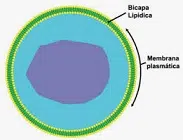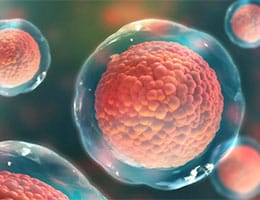 A membrane is, in the field of biology, a soft tissue that develops like a sheet. It is classified as plasmatic , meanwhile, as that linked to plasma (the liquid part of lymph or blood, which presents cells in suspension).
A membrane is, in the field of biology, a soft tissue that develops like a sheet. It is classified as plasmatic , meanwhile, as that linked to plasma (the liquid part of lymph or blood, which presents cells in suspension).
The plasma membrane is the lamellar structure that delimits the cell . It is composed of phospholipids, proteins and glycolipids that give shape to the unit and regulate the exchange between the intracellular medium (the interior) and the extracellular medium (the exterior).
The various compartments of the cell and the cytosol are contained by the plasma membrane, which also serves as a defense . It is a barrier that, based on the signals it receives, defines which molecules can enter and which can leave the cell, establishing a regulation that guarantees balance.
The entry of large molecules into the cell is called endocytosis ; egress, exocytosis . Both processes are enabled by the plasma membrane and its property known as selective permeability .
The plasma membrane, in short, delimits each cell, keeping its internal environment separated from the outside. It also enables the development of compartments; allows or rejects the entry and/or exit of particles ; acts as a mechanical defense; and reacts to external signals and stimuli.
It is important not to confuse between the plasma membrane (sometimes called the cell membrane ) and the cell wall , which is the rigid covering that covers plant and prokaryotic cells. The ambiguity is linked to the old observations made with optical microscopes, which were unable to detect the layers of the plasma membrane but were able to detect the cell wall, which was initially called the cell membrane.
For many years, scientists viewed the plasma membrane as a static group of several successive proteins-lipids-lipids-protein layers. However, this conception changed and is currently understood as a dynamic structure with a model called fluid mosaic , a term coined by the biologist SJ Singer and the biochemist Garth L. Nicolson , both natives of the United States, in the year 1972.
It is a unitary model that is also found in any other endomembrane system (the membranes of the various organelles inside cells), such as the Golgi apparatus , the nuclear envelope and the endoplasmic reticulum, without leaving out the plastids. and mitochondria, which derive from the process known as endosymbiosis .
 The plasma membrane has a chemical composition that varies depending on the tissue in which the cell is found or the function it performs. Despite this, it is possible to study it in a general way. That said, we can say that it is made up of a double layer of phospholipids, proteins that bind to it non-covalently, and carbohydrates that can be attached to either of the two covalently.
The plasma membrane has a chemical composition that varies depending on the tissue in which the cell is found or the function it performs. Despite this, it is possible to study it in a general way. That said, we can say that it is made up of a double layer of phospholipids, proteins that bind to it non-covalently, and carbohydrates that can be attached to either of the two covalently.
In the composition of the plasma membrane, lipids are the molecules that appear in the greatest number: it is estimated that there is only one protein for every fifty lipids. On the other hand, since proteins are larger, they represent almost half of the membrane's mass.
The hydrophobic tails and hydrophilic heads present in the phospholipid double layer do not allow polar solutes to diffuse through the membrane, although they generally allow hydrophobic molecules to do so passively. Among the polar solutes we find proteins, carbohydrates, water and mineral salts .
In this way, the cell can control the movement of these substances through transmembrane protein complexes such as pathways and pores, which allow certain ions such as potassium and sodium to pass through.
